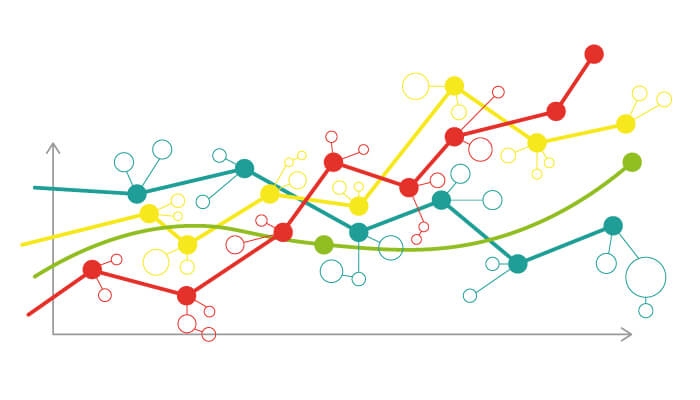When I started my career as an inhalation formulation section head at Norton Healthcare in the UK (which later became IVAX, UK, and is now part of Teva), I was fortunate enough to work with colleagues who developed Spinhaler, the first commercially successful dry powder inhaler (DPI). During that time, I learnt that DPI formulations are counterintuitively the “simplest” yet “most complicated” among all dosage forms. On the one hand, DPI formulations only contain two ingredients: micronized API and lactose – and it doesn’t get much simpler than that. (My colleagues used to joke that the first DPI formulation was prepared in the laboratory by shaking the ingredients in a plastic bag!) On the other hand, you must achieve good product performance from a fixed device with only two components – and that it is extremely challenging. This melding of simplicity and complexity really drew me to the field.
Since starting my career, I’ve been fortunate to witness constant advances in inhalation science, along with the launch of many patient-centric products. Asthma and chronic obstructive pulmonary disease (COPD) are two of the most prevalent diseases worldwide – most people will know someone who suffers (or suffer themselves). I’ve had colleagues who suffered with asthma and the inhaler significantly improved the quality of their life. And that really emphasized to me the importance of my field of work.

Inhalation as a method of delivering drugs has a long history in medicine, going back thousands of years to when medicinal herbs were burnt to ward off disease. Around the 1860s, the first nebulizer designs were introduced, one of which (using the venturi principle) remains in use today. However, inhalation therapy was not widely accepted until the mid-1950s, when Medihaler-Ept (epinephrine) and Medihaler-Iso (isoprenaline) – the first versions of metered dose inhalers (MDIs) – were launched, changing the lives of asthmatic patients forever. They were often referred to as “rescue inhalers.” Since then, many other inhalation delivery devices have been developed and launched; for example, Spinhaler, the first DPI (launched in late 1960) and Respimat, the first soft mist inhaler (launched in 2011). Today, there are numerous devices on the market, which fall within four main categories – MDIs, DPIs, nebulizers, and soft mist inhalers.
Remarkable progress has been made in recent years, including advances in device technology, improvements in container closure systems, a move towards more environmentally friendly propellants, new excipients, advances in particle engineering technology, and smart add-on devices. All of these innovations have been aimed at improving inhalation delivery efficiency, clinical efficacy, patient compliance, easy disease management, and environmental sensitivity. In my view, these are the main areas that inhalation scientists will continue to focus on in the near future.
One area where there is certainly room for improvement, however, is in the cost of inhalers. When the CFC metered dose inhaler (MDI) was phased out, we witnessed a sudden surge in price, increasing to almost $50 in the US – even with insurance. I think it is very important for companies to make inhalers more affordable for patients, by supporting the development of new products and generic alternatives.

Respiratory diseases will remain the main target for inhalation therapy given the need to achieve a rapid onset of action through direct delivery to the lungs. According to Global Initiative for Asthma and Global Initiative for COPD, the estimated global patient population is over 300 million. For these diseases, there is no effective “cure,” so we must alleviate, control and manage the disease. The standard protocol is to diagnose from symptoms, prescribe medication to assert control, adjust/reduce the doses accordingly when the symptoms are under control, and monitor the dose administration over the long term.
In addition to respiratory diseases, we have also seen continuous interest in delivering medicines for systemic therapy via the lungs because of the advantages of rapid absorption and higher bioavailability. This is essentially because of the large alveolar surface area, thin epithelium, abundant blood circulation and low enzymic metabolisms. These medicines include peptides and proteins such as insulin, vaccines and more recently SiRNA, as well as some severe pain relievers. Non-invasive, self-administration and rapid onset are the main drivers for inhalation as an alternative to other dosage form such as injection.
Developing an inhalation product requires multiple disciplines, including device, particle and formulation technologies, aerosol and manufacturing sciences, and regulatory expertise – and because of the extent of the challenges, outsourcing is often preferred. Inhalation product performance and quality are determined by the combination effects from both formulation and device; therefore, regulators consider inhalation dosage forms as a combination product.
The majority of marketed DPIs use micronized drugs and carrier lactose blend as formulations, and understanding the interaction between the two, as well as how to modulate the interaction force through selection of the physically stable micronized drugs, are the main tasks for DPI formulators.
The production of inhalable particles is another key challenge. Inhalation drugs require free-flowing particles with even morphology and surface properties for best performance. The main particle engineering technologies used are spray drying, supercritical fluid processing, and controlled crystallization.
Spray drying has been successfully used to produce inhalable particles, especially the labile peptides and proteins, whose chemical stability is retained due to the amorphous or glass structure of the spray dried particles. The disadvantage of amorphous spray dried particles is their hygroscopic nature, which demands stringent environmental conditions; products must be protected from moisture throughout the entire manufacturing process, from particle engineering to primary packaging.
Supercritical fluid processing produces crystalline particles with uniform particle size distribution and even crystalline surface, which benefits inhaled products in terms of both powder handling and aerosol performance. However, the scale-up process can be challenging.
In contrast to the micronization process, whereby large particles are broken into smaller ones within inhalable size range, controlled crystallization produces inhalable particles by controlling the process when the drug crystallizes from the saturated solution to assure even size distribution. Since the particle size is controlled while the seeds grow, the final particles have a crystalline surface, meaning they are less cohesive. The drug powders can be formed as a uniform formulation more easily and subsequently form better aerosols when delivered from the devices.
First of all, it’s crucial to make evidence-based decisions early on to get the project started on the right tracks! Therapeutic application, target patient population, drug properties, doses, and dose regime all need to be considered when selecting the right inhalation dosage form and target product profile.
At a technical level, understanding the basics is the foundation for success in inhalation product development. Thoughts to keep in mind include:
- Inhalation development involves multiple steps, each with a sequential impact on later stage. Any technical issues must be fully understood and resolved as soon as possible – never ignore them.
- Using API as an example, ensure you understand and validate the micronization process and the properties of the input materials. You must be able to produce drug particles with consistent physical properties to ensure success. The impact of the process, as well as the impact of storage conditions post-micronzation, on particle size and distribution, crystallinity and surface morphology must be fully investigated and understood. Similarly, study and monitor the effect of the formulation and process, such as order of addition, homogenization and filling process, over the entire batch during early process development.
- A quality by design (QbD) approach is highly recommended.

Unmet patient needs and ongoing advances in science and technology are the growth engines behind inhalation therapy. In addition, there is an increasing interest in the fact that inhalation dosage forms can not only target local treatment, but also systematic delivery with rapid onset of action and potentially decreased adverse effects and increased bioavailability. These benefits could be used for therapeutics outside of the respiratory space.
From the delivery platform and formulation side, I see the need to continuously develop new technologies. A few examples include developing inhalation devices with better delivery efficiency, which are more compatible to the labile molecules, and the use of more environmentally friendly propellants. The field will continue to work on new production processes that will deliver better particle properties, more manageable formulations – and less complicated and better-controlled manufacturing overall. All of these drivers also work towards our wider ambition: to provide patients with the most effective, safe, and easy to use products.




